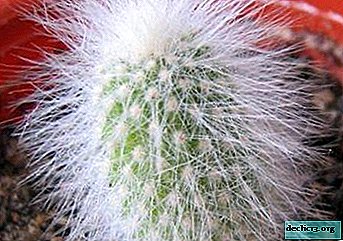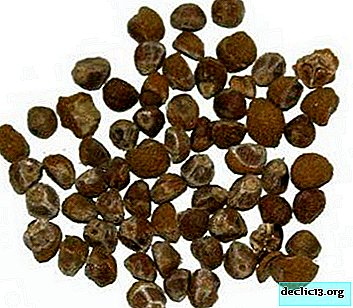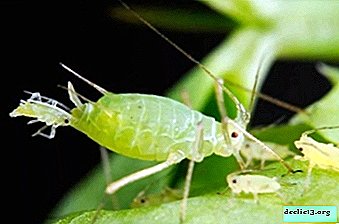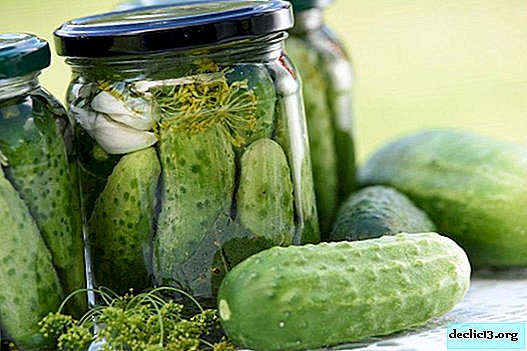The unpretentious Kleistocactus Strauss is the dream of any grower

A houseplant that does not require careful care is the dream of any grower. Kleistocactus Strauss is unpretentious, and is able to organically fit into a modern interior.
In the article you can learn how to transplant it, how to grow it yourself, what temperature regime suits him. Also consider the basic rules for caring for a cactus.
If you observe them, then he will delight his owners of amazing beauty with flowering.
Botanical description of a houseplant
The Latin name of the plant is Cleistocactus strausii. Pillar of the genus of South American cacti. Vertically located standing shoots in height can reach three meters with a diameter of fifteen centimeters.
Reference! The plant has 20-30 ribs with numerous areoles. Due to their close location, and also because a bunch of thorns comes out of each areola, it seems that the stem of the plant is completely covered with a whitish coating. For this, Strauss's Cleistocactus received a second name: a white or silver candle.The plant has four long thick central spines, about five centimeters long. This species belongs to multi-flowered. The flowers are six centimeter closed tubes. The flowering period is the last summer month, and only plants that have reached a length of 45 cm can form buds.
In the video presented, you can see how the plant looks:
Prerequisites and rules for home maintenance
Lighting
The plant needs a lot of sunlight. You can fearlessly expose it to direct sunlight, since numerous thorns are the natural protection of the plant from burns. When reducing daylight hours, the organization of additional artificial lighting will be required. With a lack of lighting, the color of the cactus may fade, it will lose its ability to bloom.
Watering
In spring, during the growing season, the plant needs regular watering. The soil in a container with a cactus should be moist, but not wet. Overfilling is detrimental to the root system, contributing to the formation of rot of fungal and bacterial origin. Since October, watering is reduced, and during the dormant period, only slightly moisten the soil.
Temperature
 The plant feels comfortable at a temperature of 24-26 degrees, but it will calmly tolerate higher thermometer readings. In winter, during the dormant period, in the room where the cactus is contained, you need to maintain a temperature of 14-16 degrees, a glazed balcony is good for this.
The plant feels comfortable at a temperature of 24-26 degrees, but it will calmly tolerate higher thermometer readings. In winter, during the dormant period, in the room where the cactus is contained, you need to maintain a temperature of 14-16 degrees, a glazed balcony is good for this.
In no case should there be drafts and sharp fluctuations in temperature, because during the dormant period the plant gains strength for subsequent growth and flowering, so any failure can affect the viability of the flower.
Priming
When choosing soil for cleistocactus, preference should be given to soil with a loose structure, with a high content of sand, gravel and a neutral chemical reaction. Half the volume of the entire capacity into which the cactus will be planted should be river sand of a large fraction. At the bottom, it is necessary to lay out a layer of drainage, about three centimeters high.
Important! You can buy a ready-made mixture for growing cacti and succulents, you can prepare the soil yourself. To prepare in equal proportions mix turf and leafy soil, add sand in the above proportion and add peat and brick chips to the finished mixture.Pot
There are no special requirements for the capacity in which it is planted, the pot does not have to be very deep. The root system of the plant is not large and, given the diameter of the stem of the plant, the pot should also not be too wide.
Pruning
To resuscitate or update the succulent, you can trim.
- A knife makes a cut of the plant from the crown. The cut off part should be about ten centimeters.
- The cut-off part should be turned in the manner of a sharpened pencil. This is necessary, since when dried, soft tissues will be drawn into the fleshy part. If the cut is left even, then in a week it can take the form of a return funnel and getting roots from such a surface will be problematic.
- Watering the plant during this period is not necessary.
Transfer
Young plants are recommended to transplant every spring, adult cleistocactus is transplanted every 2-3 years.
Transplant Instructions:
 Fill the bottom of the new pot with drainage of three centimeters. Top up prepared ground for cacti.
Fill the bottom of the new pot with drainage of three centimeters. Top up prepared ground for cacti.- Using tight mittens, pull the cactus out of the old pot.
- To clear roots of a plant from soil.
- Carefully inspect the roots and root of the neck for pests.
- Remove dried, damaged and rotten roots.
- If necessary, rinse the roots with water, but after that the cactus should be dried for at least two days.
- If the roots are in excellent condition, you can simply trim too long roots.
- In the ground, you need to make a small hole and place a cactus there, the root neck should be slightly below the substrate.
- Add a layer of upper drainage, which will serve as a support for the correct formation of the cactus.
Top dressing
Under natural conditions, this clematocactus grows on depleted soils., therefore, it can fully develop without additional nutrients, but there is a risk that it will not bloom. Therefore, it makes sense to feed the substrate during the summer, but not more than once a month. For this purpose, ready-made fertilizers for cacti and succulents, sold in flower shops, are suitable.
Wintering
Weathered comfortably rest period for cleistocactus, a guarantee of summer growth and laying buds of future flowers. The temperature for cleistocactus in the resting period from October to February should be 14-16 degrees. At this time, the plant has no signs of growth, it does not lean toward the light, does not form new areoles and thorns (and about cacti without thorns can be read here).
In winter, Cleistocactus needs a slight moistening of the soil, once a month, literally a teaspoon. During the irrigation procedure, you can bring the plant into a warmer room. During the dormant period, the plant may slightly wrinkle and decrease in size. This is not a cause for concern - the cactus is simply preparing for budding.Features of outdoor care
It is possible to plant Cleistocactus in the open ground only for the summer period. The plant can not survive the low subzero temperatures. In a garden, Strauss glue cactus should be treated with fungicides, prevent weeds from adjacent, and, in the event of a long absence of rain, should be irrigated with soft water.
Breeding
Seeds
 Sowing is carried out in a tank with a peat-sand mixture.
Sowing is carried out in a tank with a peat-sand mixture.- The container is covered with a film. Daily ventilation is necessary to prevent decay.
- Crops should be kept at a temperature of 20 degrees and ambient light.
- When the first shoots appear, the film is removed.
- Seedlings are gradually watered.
- When young plants take shape, they are planted in separate pots.
Lateral processes
- "Children" break off from an adult plant, the length of which has reached 20 cm.
- The resulting cuttings are dried for a week.
- After the set time, the planting material is rooted in pots with a substrate for adult plants.
- Until rooting is completed, young plants need support.
- Serpentine;
- Emerald flowering;
- Yellow-throated;
- Bauman;
- Winter.
Bloom
The buds of the plant are small, purple. The length of the bud tube is six centimeters. The flowering period is from late August to mid-September.
Diseases and Pests
If the irrigation rules and temperature conditions are not observed, the plant is subject to a variety of rot. The pests most often affecting Cleistocactus are a spider mite and a mealybug. The fight against them can be done by using special insecticides.
Similar flowers
Outwardly, species relatives are similar to Strauss' Cleistocactus:
The aesthetic potential of Kleistocactus Strauss is very great. Exotic column-shaped stems create a sense of the alien origin of this cactus. The plant can become both the only and unique decoration of the room, as well as a worthy addition to the collection already available at the flower grower.

 Fill the bottom of the new pot with drainage of three centimeters. Top up prepared ground for cacti.
Fill the bottom of the new pot with drainage of three centimeters. Top up prepared ground for cacti. Sowing is carried out in a tank with a peat-sand mixture.
Sowing is carried out in a tank with a peat-sand mixture.















